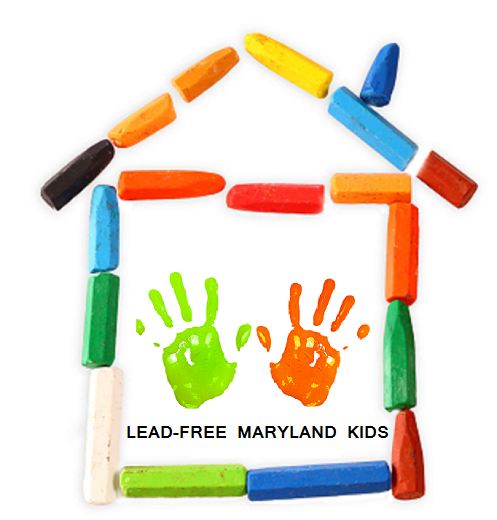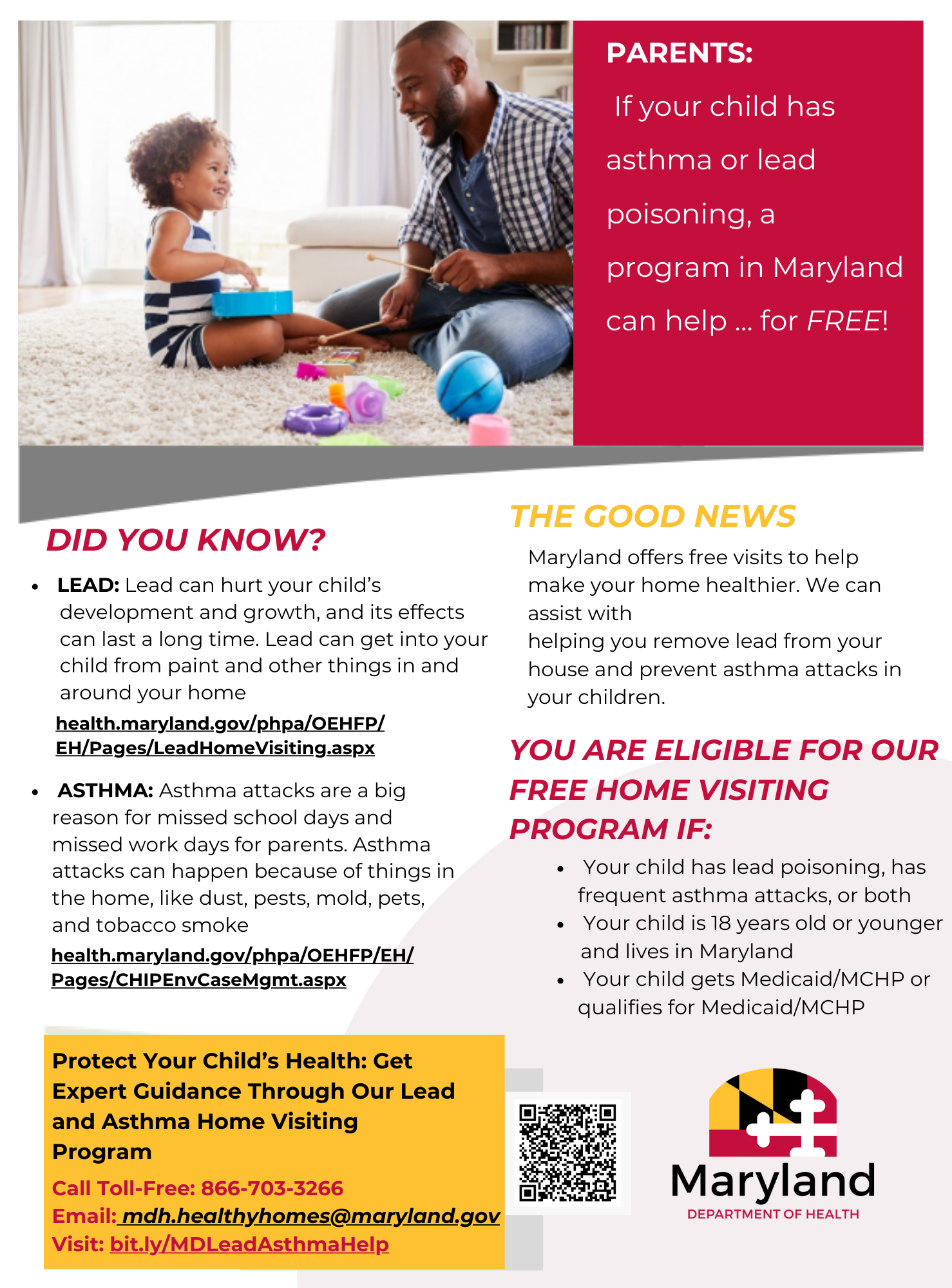What is Lead Poisoning?
Lead poisoning affects many children younger than 6 years old in Maryland. Lead can harm a child’s brain, causing lifelong learning and behavior problems.
Lead dust in the home is caused by chipping, peeling, flaking or deteriorating lead-based paint and can be found in any home. Lead can also be found in toys, jewelry, and other consumer products and may be brought home from some jobs. For more information on how to protect your family from lead, visit
http://www2.epa.gov/lead/protect-your-family#sl-home.
Lead poisoning has decreased over the years, but there is no safe level of lead. The only way to know if a child has been exposed is a blood test.

Childhood Blood Lead Testing in Maryland: Evaluation and Recommendations (Dec. 2022)
This report reviews Maryland’s recent experience in universal childhood blood lead testing and presents recommendations for future childhood blood lead testing policies. It evaluates the impacts of policy decisions in 2015 and 2016 aimed at improving lead testing rates statewide, the impacts of the COVID-19 pandemic on lead testing rates, and national changes in the blood lead reference value in 2021.

Housing and Lead, a StoryMap examining redlining, housing discrimination, and environmental health disparities in Baltimore, MD
The
Maryland Environmental Public Health Tracking Program (MD EPHT) has partnered with the Center for Community Engagement, Environmental Justice, and Health (CEEJH) to analyze and report lead data as observed through Baltimore, MD’s long history with lead exposure and poisoning. This
StoryMap unpacks how racism, housing, and lead exposure contribute to the persistent observed environmental health disparities.

What is New in Lead Poisoning Prevention in Maryland?
On October 28, 2022, Maryland Department of the Environment will start to notify parents when their child has had a blood lead level at or above the CDC's blood lead reference value of 3.5 mcg/dL, as well as rental property owners for properties covered under the law (House Bill 1110, Chapter 86, Acts of 2022).
On January 25, 2022, Maryland Department of Health
advised health care providers they should follow up on children with a Blood Lead Reference Value of 3.5 mcg/dl, as recommended by the CDC.
The Maryland Department of the Environment has new regulations for blood lead reporting and apartment owners.*
New Home Visiting and Lead Abatement Programs for Families
Maryland has two new programs for families with a child exposed to lead:
The Healthy Homes for Healthy Kids Program removes lead hazards from the home at no cost.
The Childhood Lead Poisoning Prevention and Environmental Case Management Program provides in-home services to reduce exposures to lead and to asthma triggers.
Learn more about these programs, including eligibility criteria and availability in your jurisdiction.



Universal Testing for Children at 12 and 24 months
Since 2016, all parts of Maryland are considered 'at risk' for lead exposure, for children born on or after 1/1/15. As a result, all children born on or after 1/1/15 must be tested for lead at ages 12 and 24 months. Children born before 1/1/15 should continue to be managed according to the 2004 Lead Targeting Plan (which defines specific areas of the State as 'at risk'). Read More

